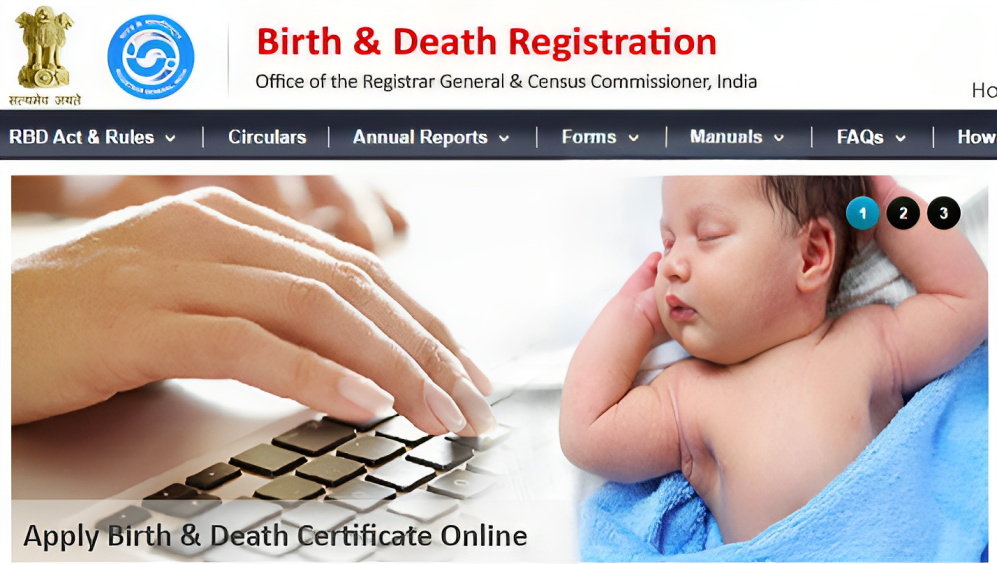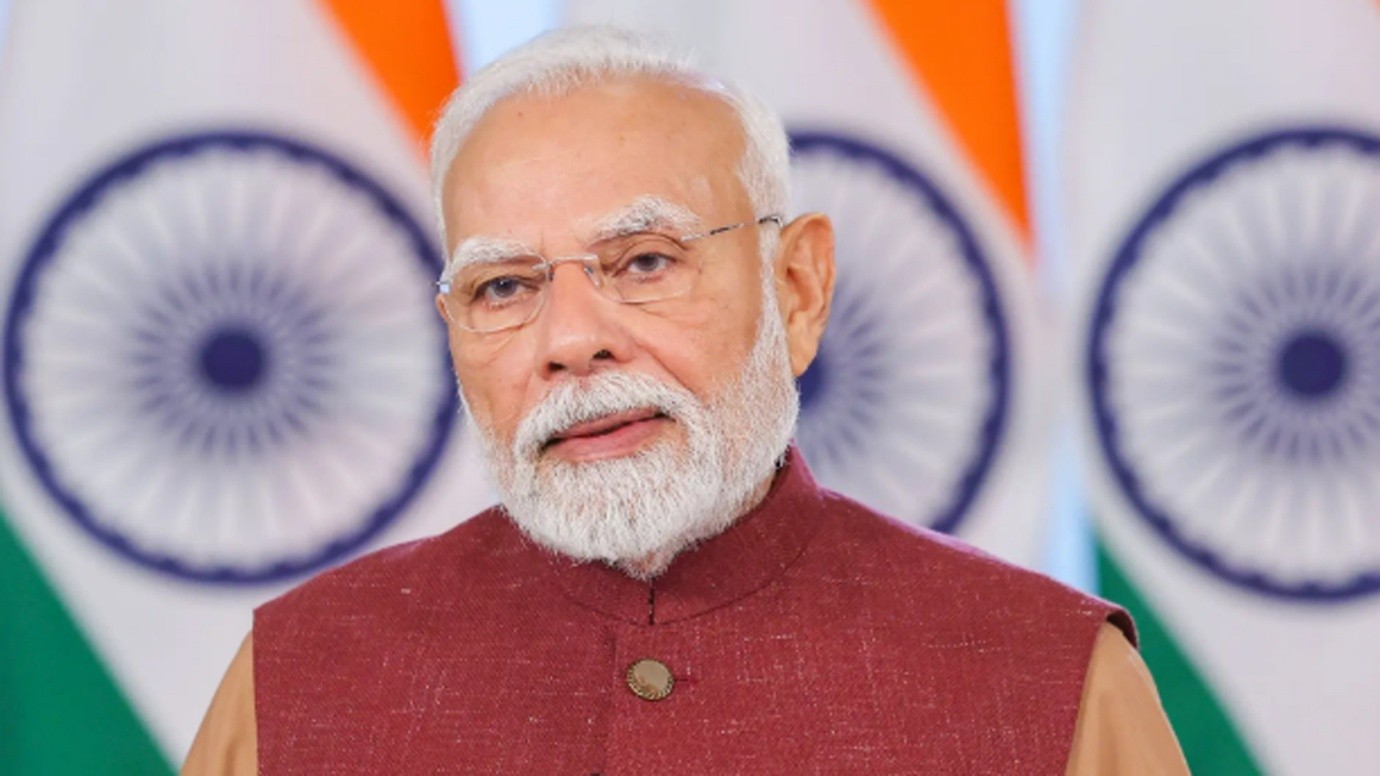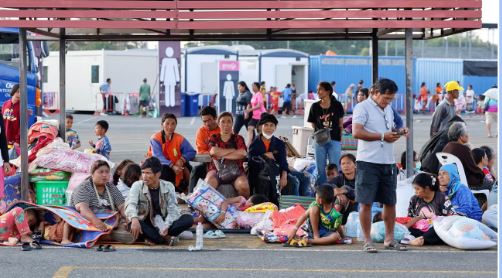Description

Copyright infringement not intended
Picture Courtesy: bnmuweb.com
Context: Starting from October 1, all births and deaths reported in the country will undergo digital registration through the Centre's portal. The move towards digital registration has the potential to streamline administrative processes, enhance accuracy, and facilitate various government services and transactions.
Details
- The Registration of Births and Deaths (Amendment) Act, 2023 is a significant development in India's administrative and governance framework. It aims to digitize the registration of births and deaths across the country. This initiative builds upon the existing Registration of Births and Deaths Act 1969, which mandated the registration of such vital events but did not fully leverage digital technologies.
Key Features of the initiative
Digital Registration
- The shift towards digital registration of births and deaths signifies a move away from traditional paper-based methods.
- Under this amendment, when a birth or death occurs, the relevant information will be entered into a centralized online portal maintained by the government. This portal will serve as the primary platform for recording and storing vital statistics, ensuring a more efficient and accurate registration process.
Single Digital Document
- The Digital certificate will include comprehensive information about the individual, including their name, date of birth, place of birth, parents' details, and more. It will be digitally signed and authenticated, making it a reliable and tamper-proof document.
- Citizens will be able to access and download their digital birth certificates from the portal, reducing the need for physical copies.
Multi-Purpose Usage
- Admission to Educational Institutions: Schools, colleges, and universities can accept the digital birth certificate as proof of age and identity during the admission process.
- Driving License Applications: Individuals can use the digital certificate as one of the required documents when applying for a driving license.
- Job Applications: Government agencies can accept digital birth certificates as proof of age and identity for job applications.
- Passport Applications: The certificate can be submitted as part of the documentation required for obtaining a passport.
- Aadhaar Enrollment: It can be used for enrolling in the Aadhaar system, which is crucial for accessing various government services.
- Voter Registration: It can serve as valid proof of age and identity when registering as a voter.
- Marriage Registration: Couples can present their digital birth certificates as proof of age and identity when registering their marriage.
Collection of Aadhaar Numbers
- The amendment authorizes the government to collect the Aadhaar numbers of parents and informants during the birth registration process, if available.
- This step enhances the linkage between vital records and Aadhaar, India's unique identification system. This linkage can improve the accuracy of demographic data, help prevent identity fraud, and enable better access to government services.
Centralized Database
- The establishment of the Civil Registration System (CRS) portal as a centralized database is a pivotal aspect of this amendment. All digital records of births and deaths will be stored in this secure and centralized repository.
- The database will facilitate data management, retrieval, and analysis, ensuring that government authorities have access to accurate and up-to-date vital statistics for various administrative and policy purposes.
.jpg)
Significance
Efficiency
- Improved Accuracy: The digital registration system enhances the accuracy of birth and death records. With manual paperwork, errors and discrepancies can occur during data entry, transcription, or storage. Digital records are less prone to such errors and can be cross-checked more easily.
- Real-time Updates: Digital registration allows for real-time updates. As soon as a birth or death is reported and registered on the portal, the information is available instantly, reducing delays and ensuring that government agencies have access to the most current data.
- Reduction in Paperwork: The shift away from physical paperwork eliminates the need for storing, handling, and processing large volumes of paper documents. This not only saves time but also reduces the administrative burden associated with managing physical records.
Streamlined Services
- Convenience for Citizens: The single digital birth certificate serves as a one-stop solution for various government services. Citizens no longer need to provide multiple documents as proof of identity and age for different transactions. This simplification makes it more convenient for individuals to access government services and reduces the paperwork they must carry.
- Faster Processing: Government agencies can process applications more quickly because they can verify an individual's identity and age with the digital birth certificate, which is readily accessible through the centralized portal. This can lead to shorter waiting times and smoother service delivery.
Data Integration
- Consistency Across Databases: The integration of the digital registration system with other critical databases, such as the National Population Register (NPR), ration cards, property registration, and electoral rolls, ensures data consistency. When individuals use their digital birth certificates for various services, it helps maintain uniformity in demographic information across different government departments.
- Preventing Duplication: Integration also helps prevent duplication and identity fraud. When data is updated in one database (e.g., birth registration), it can automatically trigger updates or checks in related databases, reducing the chances of individuals obtaining multiple benefits or identities using false information.
- Efficient Governance: For government authorities, this integrated approach streamlines data management and governance. It reduces redundancy in data collection and maintenance efforts, saving time and resources that can be better utilized for other essential tasks.
Challenges
- Data Privacy and Security: Handling sensitive personal information, such as Aadhaar numbers, raises concerns about data privacy and security. Adequate safeguards must be in place to protect this data from unauthorized access and misuse.
- Digital Divide: India has a significant digital divide, with many citizens lacking access to digital services. Ensuring that everyone can participate in this digital registration system is a challenge.
Way forward
Awareness and Outreach
- Information Campaigns: The government should launch comprehensive information campaigns across various media channels, including television, radio, newspapers, and social media. These campaigns should explain the benefits of the digital birth certificate system, how to access it, and its importance for accessing various government services.
- Community Engagement: Engage local community leaders, organizations, and influencers to disseminate information about the digital birth certificate system at the grassroots level. Community events and workshops can also be organized to address questions and concerns.
- Multilingual Content: Ensure that all communication materials are available in multiple regional languages to reach citizens in diverse linguistic regions.
Digital Literacy
- Training Programs: Collaborate with educational institutions, NGOs, and private organizations to conduct digital literacy training programs, particularly in rural and remote areas. These programs should cover basic computer skills, internet usage, and digital security.
- Mobile-Based Training: Leverage the widespread availability of mobile phones to deliver digital literacy content through mobile apps and SMS services.
- Local Digital Centers: Establish digital literacy centres in rural areas where citizens can access computers and receive hands-on training. Trained instructors can provide guidance and support.
Data Protection
- Legal Framework: Strengthen data protection laws and regulations to provide a clear legal framework for handling sensitive personal information. Ensure compliance with existing laws such as the Personal Data Protection Bill (PDPB) or any other relevant legislation.
- Privacy by Design: Integrate privacy considerations into the design of the digital birth certificate system. Implement privacy-enhancing technologies like differential privacy to protect individual data.
- Regular Audits: Conduct regular security audits, vulnerability assessments, and penetration tests to identify and address security weaknesses. Third-party audits can provide an unbiased evaluation of the system's security.
Continuous Improvement
- Feedback Mechanism: Establish a feedback mechanism for citizens to report issues, provide suggestions, and seek assistance. This can include a dedicated helpline, online forms, or mobile apps.
- Monitoring and Evaluation: Continuously monitor the performance of the digital birth certificate system, including uptime, user satisfaction, and security incidents. Use this data to make necessary improvements.
- Scalability: Design the system with scalability in mind to accommodate the increasing number of registrations and digital service users. Regularly update and upgrade infrastructure to meet growing demands.
- User Experience Enhancement: Regularly gather user feedback to improve the user interface and overall user experience. This ensures that the system remains user-friendly and accessible.
.jpg)
Conclusion
- The Registration of Births and Deaths (Amendment) Act, 2023 represents a significant step towards modernizing administrative processes in India. It aims to improve efficiency, streamline services, and ensure data accuracy while also addressing challenges related to data privacy and digital inclusion. Success will depend on effective implementation and ongoing efforts to adapt to evolving technological and social changes.
Must Read Articles:
BILL TO AMEND THE REGISTRATION OF BIRTHS AND DEATH ACT: https://www.iasgyan.in/daily-current-affairs/bill-to-amend-the-registration-of-births-and-death-act
|
PRACTICE QUESTION
Q. What are the key factors contributing to the digital divide in today's society, and what are the significant social, economic, and educational impacts of this divide? What innovative strategies and policies can be employed at the local, national, and global levels to bridge the digital divide and ensure equal access to digital services, thereby promoting inclusivity and digital equity for all?
|
https://www.thehindu.com/news/national/all-reported-births-and-deaths-to-be-digitally-registered-on-centres-portal-from-october-1/article67307282.ece











